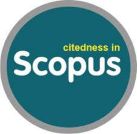The Synergy of Numerical Intelligence and Learning Interest in Determining the Mathematics Achievement of Students at SD Negeri 1 Passo
Abstract
Keywords
Full Text:
PDFReferences
Achdiyat, M., & Utomo, R. (2017). Kecerdasan visual-spasial, kemampuan numerik, dan prestasi belajar matematika. Formatif: Jurnal Ilmiah Pendidikan MIPA, 7(3), 234–245.
Anwar, A. (2023). Pengaruh kecerdasan logis matematis dan kemampuan numerik terhadap hasil belajar matematika siswa. Seminar Nasional Pendidikan Matematika (SNPM), 52–60.
Arikunto, S. (2019). Prosedur penelitian suatu pendekatan praktik (Edisi Revisi VI). Jakarta: Rineka Cipta.
Arni, Y., Novitasari, S., Nurhaliza, S., & Sabila, D. (2024). The influence of learning styles, attitudes, and interests on learning outcomes in mathematics subjects in elementary schools. International Journal Of Education, Social Studies, And Management (IJESSM), 4(1), 131–141.
Creswell, J. W., & Creswell, J. D. (2018). Research design: qualitative, quantitative, and mixed methods approaches (5th ed.). SAGE Publications.
Pratiwi, D. T., & Alyani, F. (2022). Kemampuan pemecahan masalah matematika siswa kelas v SD pada materi pecahan. Journal for Lesson and Learning Studies, 5(1), 136–142.
Etikan, I., Musa, S. A., & Alkassim, R. S. (2016). Comparison of convenience sampling and purposive sampling. American Journal of Theoretical and Applied Statistics, 5(1), 1-4.
Fitrianti, H., & Nur, A. S. (2018). Structural model external and internal factors that influence students' mathematical learning achievement. International Conference on Science and Technology (ICST 2018), 1, 853–857.
Gao, Q., & Fu, H. (2017). A Comprehensive Study on the reason of low enthusiasm for master students majored in basic mathematics. Open Journal of Social Sciences, 05(04), 216–226.
Ghozali, I. (2018). Aplikasi analisis multivariete dengan program IBM SPSS 23. Badan Penerbit Universitas Diponegoro.
Hanifah, A. I., & Masruroh, M. (2022). The impact of students' learning interests on learning outcomes in a linear algebra course. IJECA (International Journal of Education and Curriculum Application), 5(2), 150.
Hanushek, E. A., & Jackson, J. E. (2013). Statistical methods for social scientists. Academic Press.
Harefa, D. (2023). The relationship between students'interest in learning and mathematics learning outcomes. Afore: Jurnal Pendidikan Matematika, 2(2), 1–11.
Indrawati, F. (2015). Pengaruh kemampuan numerikdan cara belajar terhadap prestasi belajar matematika. Formatif: Jurnal Ilmiah Pendidikan MIPA, 3(3), 215–223.
Kemendikbud. (2020). Kebijakan merdeka belajar di sekolah dasar.
Kheirkhah, M. T., Shekarro, M., Mirchi, Z., & Gharibzadeh, S. (2023). The impact of transcranial brain stimulation combined with cognitive training on attention and working memory: a review of literature. Frontiers in Biomedical Technologies, 10(2), 221–233.
Mariamah, M., Ratnah, R., Katimah, H., Rahman, A., & Haris, A. (2021). Analysis of students' perceptions of mathematics subjects: case studies in elementary schools. Journal of Physics: Conference Series, 1933(1).
Maskur, R., Sumarno, Rahmawati, Y., Pradana, K., Syazali, M., Septian, A., & Palupi, E. K. (2020). The effectiveness of problem based learning and aptitude treatment interaction in improving mathematical creative thinking skills on curriculum 2013. European Journal of Educational Research, 9(1), 375–383.
NCTM. (2014). Access and equity in mathematics education: a position of the national council of teachers of mathematics.
Noemy, M. S., Inés G., R., Cristina, I. G., & Patricia, A. P. (2017). Exploring academic performance: looking beyond numerical grades. Universal Journal of Educational Research, 5(7), 1105–1112.
OECD. (2019). PISA 2018 results (volume I): what students know and can do. OECD Publishing.
OECD. (2023). PISA 2022 results: factsheets Indonesia. OECD Publishing.
Permendikbud. (2022). Peraturan menteri pendidikan dan kebudayaan tentang standar nasional pendidikan dasar dan menengah.
Retnawati, H., & Wawan. (2022). Empirical study of factors affecting the students' mathematics learning achievement. International Journal of Instruction, 15(2), 417–434.
Ridwan, M. R., Hadi, S., & Jailani, J. (2023). A meta-analysis of numerical aptitude's effect on learning outcomes and mathematical ability. TEM Journal, 12(1), 434–444.
Saputri, S., Ruqoyyah, S., & Eti Rohaeti, E. (2024). Analysis of student difficulties in learning mathematics in elementary school lower grades. Journal of Educational Experts (JEE), 7(2), 50–63.
Sinaga, S. J. (2022). The effect of motivation and learning style on students' mathematics learning achievement. Jurnal Basicedu, 6(3), 3554–3562.
Stacey, K. (2006). What is mathematical thinking, and why is it important?
Sugiyono. (2013). Metode penelitian kuantitatif, kualitatif dan R&D (Cetakan Ke-19). Bandung: Alfabeta.
Suhudi, R., Herlinda, & Vebrianto, R. (2024). Pengembangan instrumen motivasi belajar siswa: kuesioner. 9(1), 83–95.
Sulfiani, B., Nurhayati, N., Abdullah, E., Takwa, E. S., Fitriani, F., & Nesti, V. A. (2024). Increasing student learning interest through cooperative learning. Journal La Edusci, 5(3), 162–168.
Wibowo, D. C., Ocberti, L., & Gandasari, A. (2021). Studi kasus faktor-faktor yang mempengaruhi hasil belajar matematika di SD Negeri 01 Nanga Merakai. Jurnal Ilmiah Aquinas, 4(1), 60–64.
DOI: https://doi.org/10.17509/md.v21i1.86831
Refbacks
- There are currently no refbacks.
.png)
Universitas Pendidikan Indonesia, Purwakarta Campus
Jl. Veteran No. 8. Purkawarta
West Java, Indonesia
Email: metodikdidaktik@upi.edu


























